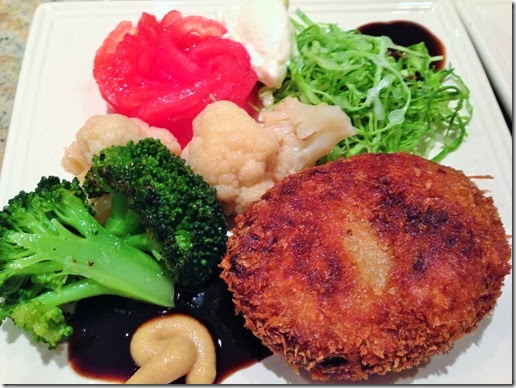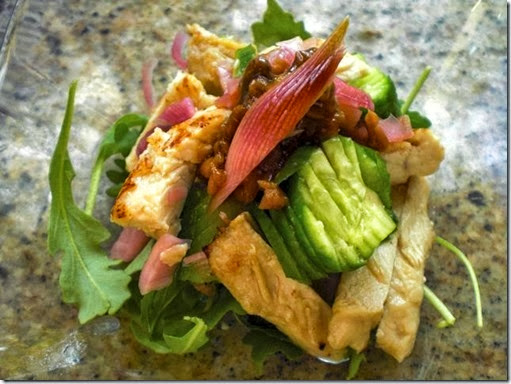"Toba とば, written in kanji ideograms as 冬葉 which means "winter leaves". This is a famous item on my home island of Hokkaido. The name, I suppose, comes from the way the strips of salted salmon drying in the cold winter wind resembles brown leaves on the bare branches of trees. Traditional toba is usually very chewy, or sometimes hard like a strip of leather, and very salty. It is sort of the Hokkaido version of beef jerky. This version is considerably "tamed". The skin has been removed and it is cut into smaller pieces. In addition, somehow it has been made much softer, although it is still quite salty."
As you can see below it’s resemblance to narrow blades of a leaf is unmistakable.

This one is also a modern version and is not too salty or too hard like traditional ones. Eating this brought back nostalgic memories of my youth. I remembered that when I was young and bar-hopped in Susukino すすきの, these were usually served with mayonnaise, soy sauce and tougarashi (Japanese red pepper flakes) mixture as shown below. They were often even delivered to your mouth by an obliging hostess—although I am not sure that improved the flavor in any way.

This and other items came in a box proclaiming "True authentic gifts that only Hokkaidians* can give".

*I am not sure this is a correct Demonym for people of Hokkaido but people in Arcadia is Ardadians, people in Hokkaido could be Hokkaidians or other choice may be Hokkaidoites.
Last time, I succumbed to having this with scotch and water but this time we stayed with red wine. Although I have to admit it probably goes better with the scotch.





 The first version was a bit too large to eat in one bite. This particular prosciutto was not the best--a bit tasteless, although the almost sweet tasting balsamic vinegar combined with the sweetness of the fig was nice. The goat cheese, black pepper, olive oil plus the smaller size of the second version made the dish easy to eat and gave it more flavor dimensions.
The first version was a bit too large to eat in one bite. This particular prosciutto was not the best--a bit tasteless, although the almost sweet tasting balsamic vinegar combined with the sweetness of the fig was nice. The goat cheese, black pepper, olive oil plus the smaller size of the second version made the dish easy to eat and gave it more flavor dimensions.














